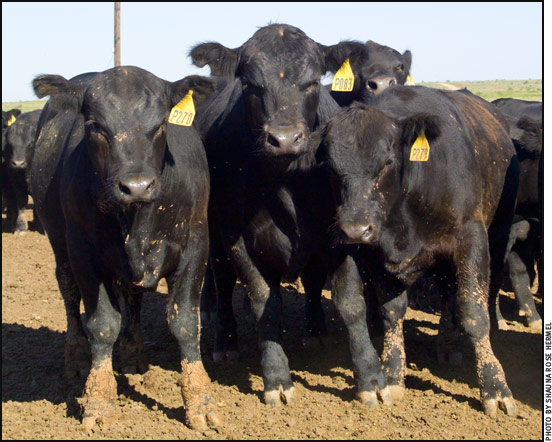 Better Decisions
Better Decisions
EPDs help cattlemen make better genetic improvement decisions.
Better data yields better decision-making in genetic selection, according to Ohio State University (OSU) Extension beef coordinator John Grimes. A new expected progeny difference (EPD) from the American Angus Association and improvements in DNA technologies mean even better data for beef producers.
An EPD is a statistical estimate of how progeny of a given animal are expected to perform relative to progeny of another animal.
"We have this whole catalog of EPDs," Grimes said. "In the past we concentrated on growth, carcass and maternal traits. The trait we need to improve now, as far as profitability for cattle breeders, is fertility."
A new EPD reported by the American Angus Association aims to help in that regard. Heifer Pregnancy, designated HP on pedigrees and the breed's sire summaries, is essentially a predictor of the probability of a bull's daughters' becoming pregnant as first-calf heifers during a normal breeding season. It is reported in percentage units, with a higher EPD indicating a higher expected pregnancy rate.
"In other words, if you compare two bulls and one has a 5% advantage in heifer pregnancy, that means an additional five heifers pregnant per 100 heifers bred," Grimes explained. "In this economy, that could be a significant improvement."
Data-driven genetic selection
While the industry provides producers with more data as understanding of genetic improvement improves, Grimes said more producers should employ data-driven genetic selection on their farms.
He said while adoption of EPDs has improved in recent years due to breeders' focus on traits like calving ease and birth weight, use of the data is far from universal.
"Anything less than 100% is not enough," Grimes said. "We're seeing improvement, because people are more conscious of certain traits. Calving ease is an example, and I think heifer pregnancy will evolve that way. If you can't get heifers bred or get them calved, the other traits don't matter."
Grimes noted that when prices are strong, as they are currently, producers may lose some motivation to employ the most intensive management practices on the farm. However, as data begin following cattle from calving to consumption, market forces will focus more attention on EPDs throughout the production chain.
As cattle are followed through the supply chain, he said packers are increasingly able to identify where the cattle come from. As that practice becomes more common, commercial producers likely to otherwise ignore EPD data will pay more attention to their calves' genetic background to ensure their cattle present a desirable carcass.
In addition to the new HP EPD, the latest sire summary marked the first time the Angus Association's calving ease EPD was enhanced with genomic data. The practice of DNA-based data into EPDs has, in theory, yielded more substantive data for producers to evaluate in genetic decisions.
"The genomic data has solidified the data we already had," Grimes explained. "We have live data like the animal's actual weaning weight, then we add his progeny data, and now we have his genomic data, too. It's another piece of the puzzle."
Grimes' hope is that more Ohio cattlemen will use data in efforts to improve their production and profitability. He said the tools are available from the major breeds, noting that the Simmental and Hereford associations, among others, provide considerable information on an animal's genetic merit and potential.
"Information is power. The more you know about your cattle, the better. The more information a breeder has, the easier it is to sell cattle."
[Click here to go to the top of the page.]













